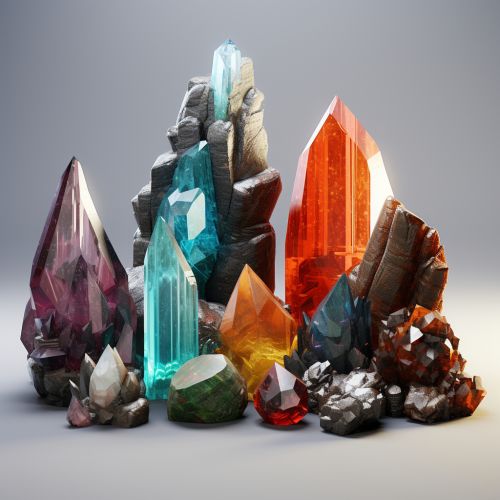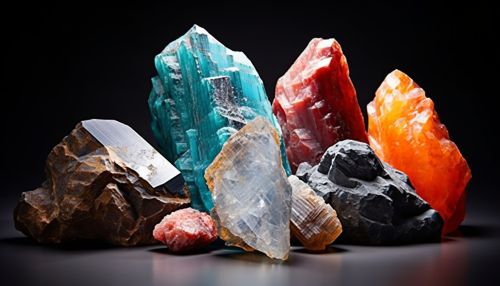Silicate minerals
Introduction
Silicate minerals are the largest and most important class of rock-forming minerals, constituting approximately 90 percent of the Earth's crust. They are classified based on their structure and chemistry, which are influenced by the type of silicon and oxygen tetrahedra, the types of additional ions present, and the coordination of the additional ions to the tetrahedra.


Classification
Silicate minerals are classified into seven main groups: nesosilicates, sorosilicates, cyclosilicates, inosilicates, phyllosilicates, tectosilicates, and silicate subclasses. Each group has a unique structure and set of properties, which are determined by the type and arrangement of the silicon-oxygen tetrahedra.
Nesosilicates
Nesosilicates, or island silicates, have isolated tetrahedra that are not connected to each other. Examples include olivine, garnet, and zircon.
Sorosilicates
Sorosilicates, or double island silicates, have two isolated tetrahedra that are connected by a shared oxygen atom. Examples include axinite, epidote, and zoisite.
Cyclosilicates
Cyclosilicates, or ring silicates, have tetrahedra that are arranged in rings. Examples include beryl, tourmaline, and cordierite.
Inosilicates
Inosilicates, or chain silicates, have tetrahedra that are arranged in single or double chains. Examples include pyroxene, amphibole, and jadeite.
Phyllosilicates
Phyllosilicates, or sheet silicates, have tetrahedra that are arranged in sheets. Examples include mica, clay minerals, and serpentine.
Tectosilicates
Tectosilicates, or framework silicates, have tetrahedra that are connected in three dimensions. Examples include quartz, feldspar, and zeolite.
Silicate Subclasses
Silicate subclasses include borosilicates and aluminosilicates. Borosilicates have boron atoms replacing some of the silicon atoms in the tetrahedra. Aluminosilicates have aluminum atoms replacing some of the silicon atoms.
Chemical Composition
The chemical composition of silicate minerals is diverse due to the many possible combinations of silicon, oxygen, and other elements. The basic building block of all silicate minerals is the silicon-oxygen tetrahedron, which consists of one silicon atom surrounded by four oxygen atoms. Other elements, such as aluminum, iron, magnesium, and potassium, can substitute for silicon in the tetrahedra, leading to a wide variety of silicate minerals.
Physical Properties
The physical properties of silicate minerals, including color, hardness, specific gravity, and luster, are determined by their chemical composition and crystal structure. For example, the hardness of quartz, a tectosilicate, is 7 on the Mohs scale, while the hardness of talc, a phyllosilicate, is 1 on the Mohs scale.
Economic Importance
Silicate minerals have many economic uses. For example, feldspar and quartz are used in the manufacture of glass and ceramics, while mica is used in electrical and thermal insulation. Additionally, many precious and semi-precious gemstones, such as garnet, topaz, and amethyst, are silicate minerals.
